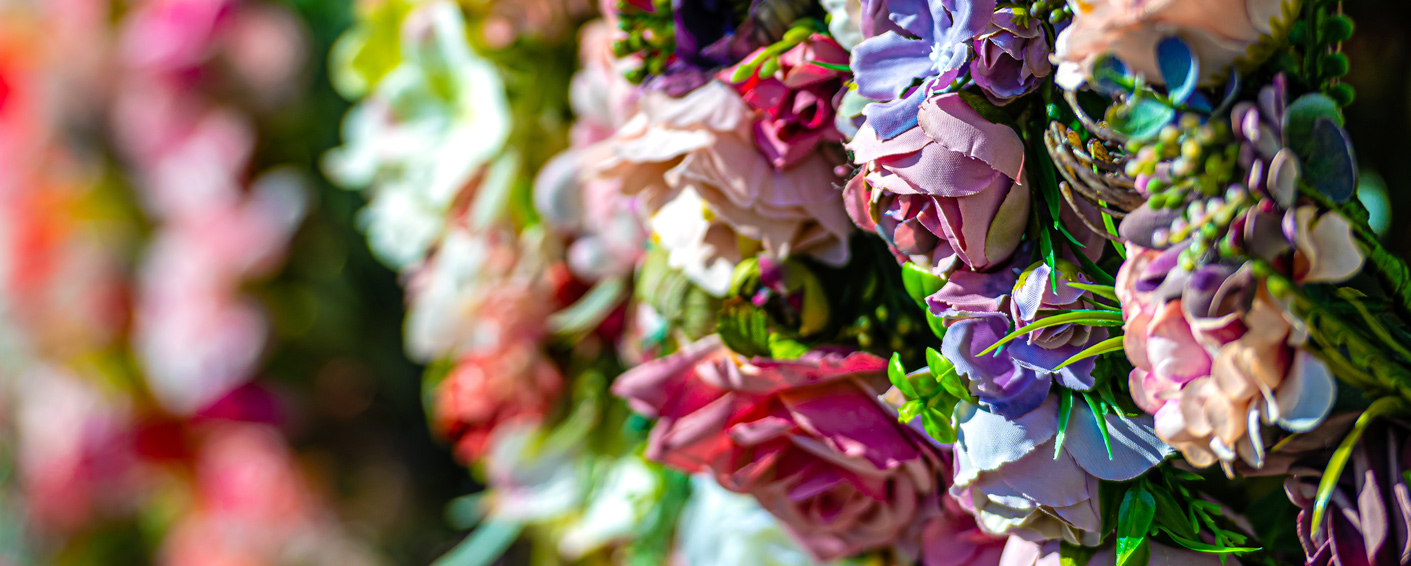
How to Handle Floral Orders for Large Weddings and Events
When it comes to large weddings and events, floral design is one of the most important—and challenging—elements to manage. From grand centerpieces to sweeping floral installations, the logistics of designing, sourcing, and delivering flowers can feel overwhelming. But with the right planning and organization, floral designers can successfully manage these large-scale projects and create breathtaking experiences for their clients.
In this blog, we’ll share some practical tips and strategies for handling floral orders for large weddings and events—from the planning phase to the delivery and clean-up—to help you stay on track and ensure a flawless execution.
1. Start with a Detailed Plan
The foundation of any successful large-scale floral project is a detailed plan. Without it, managing the logistics of sourcing, designing, and executing the vision can quickly become chaotic. Here’s what to include in your plan:
-
Consultation & Vision Alignment
Begin by meeting with your client to understand their vision. Discuss the theme, color palette, style, and specific floral preferences. This is the time to determine the key areas where florals will be used (centerpieces, arches, bouquets, aisle arrangements, etc.). Be sure to ask for any inspiration images or references to ensure you’re on the same page. -
Create a Floral Design Timeline
Map out a timeline for each stage of the project. This should include when the flowers will be ordered, when they will arrive, when designs will be created, and the day of the event. Be sure to build in enough time for each phase of the process, including deliveries, installations, and any final touches needed before the event begins. -
Budget Breakdown
Large events often come with hefty budgets, and it’s essential to provide a breakdown of costs for both the flowers and the design work. This allows your clients to understand where their money is going and gives you a reference point for managing costs throughout the project. -
Confirm the Event Schedule
Make sure you have a clear understanding of the event’s schedule. Know exactly when the venue will be available for setup, when guests are expected to arrive, and when the clean-up process must be completed. Knowing the timing will help you determine when to schedule deliveries and installations.
2. Source Flowers Early and in Bulk
When handling large floral orders, one of the most important steps is sourcing flowers early and in bulk. Here’s how to manage this aspect effectively:
-
Plan Ahead for Seasonal Availability
Flowers come and go with the seasons, so it’s important to plan your designs around what’s available during the event’s date. Work with your supplier to ensure you’re selecting flowers that are in season and readily available. For uncommon blooms or those requiring special sourcing, order well in advance to avoid disappointment. -
Order Extra Flowers
When designing for large weddings and events, always over-order by a little. You’ll likely need more flowers than you initially anticipate for adjustments, last-minute additions, or fixing any damage during installation. Ordering extra flowers also gives you the flexibility to make last-minute changes if needed. -
Establish Relationships with Trusted Suppliers
For large events, it’s crucial to work with trusted suppliers who can provide consistent, high-quality flowers. Build relationships with wholesalers and local farms to ensure reliable deliveries and to get the best prices. Establish a clear delivery schedule so flowers arrive when expected and are handled with care.
3. Delegate and Build a Team
Managing a large floral order for an event requires a team effort. Designating specific roles and delegating tasks will make the entire process much smoother.
-
Assign a Lead Designer
For large events, it’s helpful to have a designated lead designer to oversee the overall vision and final details. This person is responsible for making sure all floral arrangements are in line with the client’s expectations. They should also keep track of timelines and coordinate with other team members. -
Build a Strong Support Team
Having a support team is essential for handling the volume of work involved in large events. Recruit assistants or other designers to help with tasks such as prepping flowers, assembling bouquets, and constructing larger installations. Make sure each person knows their responsibilities in advance. -
Utilize Vendors for Specific Tasks
For complex elements such as floral arches, chandeliers, or large-scale installations, consider working with specialized vendors who can assist with construction and setup. It’s better to bring in experts for certain tasks than to risk compromising the design or timeline.
4. Logistics of Delivery and Installation
Delivering and installing floral arrangements for a large wedding or event requires precise timing and organization. Here’s how to manage the logistical challenges:
-
Schedule Deliveries Strategically
Ensure all flowers are delivered to the event site at the correct time, preferably a few hours before installation begins. You may need to coordinate with other vendors (caterers, lighting technicians, etc.) to ensure everything is in place without overlapping. Be sure to factor in transportation time, especially if the flowers need to be delivered from a distant location. -
Venue Access & Setup Time
When working with venues, confirm access times well in advance. Some venues may require vendors to work within specific timeframes for setup and teardown. If the venue is not available until the day of the event, ensure you have enough time to install all arrangements. Be prepared to adapt to any last-minute changes, as sometimes venues may run behind on their preparations. -
Floral Installation Plan
Large floral installations, such as hanging displays, floral walls, or elaborate centerpieces, require careful planning for installation. Create a step-by-step guide for the installation process, including how the flowers will be arranged, secured, and adjusted on-site. Larger designs may need to be assembled in sections or transported in parts for easy installation. -
Prepare for Damage Control
During transportation and installation, flowers can get damaged. Make sure to bring extra supplies like floral tape, scissors, and wire to make quick adjustments or repairs if needed. Having a contingency plan for any unforeseen issues, like flowers wilting or not fitting as planned, will help keep the process running smoothly.
5. Event Day: Final Touches and Clean-Up
The event day is when all your hard work comes together, but it also brings the need for flexibility and last-minute adjustments.
-
On-Site Adjustments
Once the flowers are installed, do a final walkthrough to ensure everything looks perfect. Check for wilted or damaged blooms and replace them promptly. Small adjustments, such as shifting a vase or repositioning an arrangement, can make a significant difference in the overall look. -
Cleaning Up After the Event
After the event, clean-up is just as crucial as setup. Coordinate with the event team to dismantle and remove the floral arrangements carefully. If you’re offering post-event clean-up services, consider donating leftover flowers to hospitals or charitable organizations to give them a second life.
6. Post-Event Follow-Up
Once the event is over, follow up with the client to gather feedback on their experience. Did the flowers meet their expectations? Were there any logistical challenges? This information will be invaluable for future projects and help you refine your process for handling large events.
Handling floral orders for large weddings and events requires careful planning, strong communication, and efficient execution. By establishing a detailed plan, sourcing flowers in advance, building a reliable team, and staying organized throughout the process, floral designers can manage the logistics of large-scale floral projects and deliver stunning designs that exceed client expectations. With a clear strategy and attention to detail, you’ll be able to handle the demands of even the biggest events with ease.



